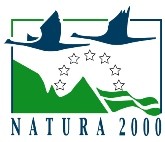Bird webcams in Latvia 2017
live stream provided by Latvian Fund for Nature
Already for the sixth season (since 2012) Latvian Fund for Nature is deploying online webcams at nests of protected bird species for educational and research purposes. In 2017 we have six live cameras at: Eurasian Eagle-owl, Osprey, White-tailed Eagle, Goshawk, Black stork and Eursian bittern nests.
Watch all webcams in one window
The live feeds from the life of birds are only possible thanks to a group of volunteers and financial support of people that love our cameras.
If you love our live feeds, SUPPORT AND DONATE!
NEWS
Actual events in the nests (in latvian)
Video archive
EURASIAN EAGLE-OWL Bubo bubo
The nest of Eurasian Eagle-owl is located in Latvia in Kurzeme region. The nesting area is known since 1998, when the natural nesting place was found on the ground. After several unsuccessful nesting cases on the ground, the artificial nest was built in spruce, about 10 m in height. Since 2013 the nesting is successful. The nest is so big, that a grown man might curl in it!
Right now the Eurasian eagle-owl female has laid three eggs, the male is nearby and guards the nest all day.
Forum in latvian and english.
OSPREY Pandion haliaetus
The Osprey nest is located in Latvia in Kurzeme region. This nesting area is known since 1989. In 2007 artificial nest was build in pine tree and in 2010 the first Osprey couple inhabited it. From 2012 to 2015 one to three chicks was raised in the nest. In 2016 the nest was inhabited, but with no chicks. In years, when the nesting was successful, none of the adult birds was ringed, so the origin of the birds was unknown.
Forum in latvian and english.
WHITE-TAILED EAGLE Haliaeetus albicilla
The nest of White-tailed eagle is located in W part of Latvia in Durbe County. It is known as White-tailed eagle nesting area since 2014. This nest is interesting with its location in the spruce tree. It is only fourth historically known nest in Latvia that is built in spruce (roughly half of all nests are built in pine trees, one third – in aspen trees, one tenth – in birch trees; more seldom spruce, oak and black alder is chosen). “Spruce nests” are usually built on such broken tops and are located high above the ground (in this case roughly 30 meters) – the highest nest of White tailed eagle in Latvia is located 31,5 meters above the ground and is built in spruce as well. Camera was installed in winter 2015.
The White-tailed eagles lay eggs (1-3) in the end of February or in the first weeks of March (in rare cases it happens as late as in early April). Incubation usually lasts for 38 days; the young birds are going in their first flight in the age of 2 and a half months.
The video can be discussed in Dabasdati.lv forum in latvian and Looduskalender.ee forum in english.
NORTHERN GOSHAWK Accipiter gentilis
The nest is located in capital of Latvia - Riga, in urban vicinity. Nest was found in 2013, build in the poplar tree.
The video can be discussed in Dabasdati.lv forum in latvian and Looduskalender.ee forum in english.
BLACK STORK Ciconia nigra
Black Stork webcam nest is located in Zemgale, in region between towns of Jaunjelgava and Jēkabpils and village of Ērberģe. Nest tree is an oak, situated on the bank of small river in an old growth forest. The nest was found in year 2013, and since 2015 equipped with webcam. In both years - 2015 and 2016 - two youngsters were raised in this nest.
Black storks in Latvia return in the end of March - April. In the winter 2016/2017 two main branches of the nest tree were broken.
The video can be discussed in Dabasdati.lv forum in latvian and Looduskalender.ee forum in english.
EURASIAN BITTERN Botaurus stellaris
The great bittern webcam nest is located in Latvia in the reedbeds of Lake Engure. The nest was found on May 3th, 2017 with five eggs in it. The chicks has hatched in time from 4 to 8 May. The female is the only one to feed, protect and heat the young birds.
These live cameras operating season will be shorter than we are accustomed to when observing the lifestyle of birds of prey. This is because after hatching, the chicks spend about three weeks in the nest and then disperse amongst the reeds.
The video can be discussed in Dabasdati.lv forum in latvian and Looduskalender.ee forum in english.
The web camera is installed within the project “Restoration of Bittern habitats in two coastal lakes in Latvia” (COASTLAKE LIFE12 NAT/LV/000118). The project is financed by European Commission LIFE+ program and Latvian Environmental Protection Fund Administration.

SUPPORTERS
|
Data transmission to the server:
|
Finansial and technical support (4G routers):
|
System configuration:
|
|

|

|

|
| |
PRIVATE DONORS
|
|





















